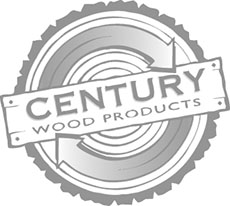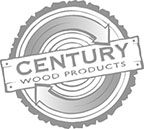Care and Maintenance
Find a Professional
Wood floors are an investment that increases the value of your home. Just like for your plumbing or electrical needs, you should look to a professional to help you maintain that investment.
The wood floors you choose today will last for generations, so you want to make sure that the wood flooring professional you choose has access to the latest industry information to provide you with high-quality results. By choosing a member of the NWFA, you can be certain that he or she has the knowledge and skills to deliver a beautiful wood floor that will last for the lifetime of your home.
If an issue arises with your newly installed wood flooring, first call the company that installed it. If an agreement cannot be reached, contact an NWFA Certified Professional Inspector who has been specifically training to conduct wood flooring inspections.
What to Expect from Your Installation
Once you’ve decided to install or refinish a wood floor, you may wonder what will happen next. Knowing what to expect before, during, and after the work takes place will help ensure a high-quality job.
Before
Before the work begins, remove all furnishings, draperies, paintings, and other items from the room. For new installations, the wood will need to acclimate to the job site, which will vary depending on the species.
After
After the finish has dried, put felt pads on the bottoms of any furniture to minimize scratches and dents. Place rugs at all entrances, avoiding those with rubber backs, which can discolor your floor. Avoid walking on your floors with cleats or high heels in disrepair.
Keep in mind that no two floor boards will be identical. Variations in appearance are normal. As your floor ages, some color change can occur. This also is normal, but can be minimized by limiting exposure to direct sunlight, and periodically moving furniture and rugs. Seasonal humidity change may cause the wood to expand and contract. Cracks are normal and will appear and disappear between floor boards during seasons of high and low humidity. Flooring inspectors recommend inspecting the floor from a standing position in normal lighting to identify irregularities.
Finally, keep your wood floors looking their best by properly maintaining them. Use a cleaning product recommended for your floors, and maintain fluctuations in home relative humidity between 30 and 50 percent to keep them looking beautiful for years to come.
Equilibrium Moisture Content (EMC)
Wood is a hygroscopic substance meaning it has the ability to take in or give off moisture in the form of vapour. The water contained in wood exerts vapour pressure of its own which is determined by the maximum size of the capillaries filled with water at any time. If the water vapour pressure within an ambient space is lower than the vapour pressure within the timber in that space, desorption takes place as the timber loses moisture.
The balance between the moisture content of timber flooring and the long term ambient conditions of a building or geographic region is known as the Equilibrium Moisture Content (EMC) which can be assessed against published isometric charts. It’s important to note that the EMC of timber varies significantly with ambient relative humidity and to a lesser extent with temperature and other related factors.
Acclimatization
Acclimatization is the process of allowing timber to adjust to the ambient environmental conditions in which the flooring will be installed. The primary reason for acclimatizing timber is to minimize the dimensional changes (or movement) in the final product.
Once the average long term moisture content for a building is identified, acclimatization to that specific value is appropriate prior to installation. The time for acclimatization will be dictated by the condition of the flooring at time of delivery, the degree of adjustment required and the prevailing internal ambient conditions at the time. Artificial modification of internal conditions to favour the target moisture content value can assist in reducing the acclimatization period.
When a hygroscopic material such as timber flooring neither gains nor loses moisture when exposed to a specific combination of ambient temperature and humidity, acclimatization has occurred. Unless a building has permanent climate control, acclimatization of timber flooring to a particular dwelling or building will never be perfect and should be in harmony with the “average” in-service conditions of that particular building or region over time.
Acclimatizing timber to a particular season prior to installation will only stabilize the timber whilst those conditions prevail. Most homes and buildings experience regular changes to ambient conditions and when timber is exposed to a change in ambient moisture (relative humidity) the timbers moisture content will fluctuate to suit the prevailing conditions of the period. This may result in minor dimensional change to the boards which is completely normal in this naturally occurring product.
It’s imperative that your chosen contractor has a firm understanding of timber moisture contents and acclimatization and as a minimum they should always be moisture testing the timber on site prior to installation.
Routine Maintanence
Cleaning your wood floors is easy. Regular maintenance includes sweeping with a soft bristle broom, and vacuuming with the beater bar turned off. You also should clean your floors periodically with a professional wood floor cleaning product recommended by a wood flooring professional.
There are other steps you can take to maintain the beauty of your wood floors
Do not use vinyl or tile cleaning products on wood floors. Self-polishing acrylic waxes cause wood to become slippery and appear dull quickly.
Use throw rugs at doorways to help prevent debris from being tracked in and scratching your floor.
Do not wet-mop a wood floor. Standing water can dull the finish, damage the wood and leave a discoloring residue.
Wipe up spills immediately with a slightly dampened towel.
Put stick-on felt protectors under the legs of furniture to prevent scuffing and scratching. Replace these often as dirt and debris can become imbedded on the pad and act like sand paper on the flooring surface.
Avoid walking on your wood floors with sports cleats and high heels in disrepair. A 125-pound woman walking in high heels with an exposed heel nail can exert up to 8,000 pounds per square inch. This kind of impact can dent any floor surface.
When moving heavy furniture, do not slide it on wood flooring. It is best to pick up the furniture to move it and to prevent scratches.
For wood flooring in the kitchen, place an area rug at the kitchen sink.
Use a humidifier throughout the winter months to minimize gaps or cracks.
Frequently Asked Questions
How are polyurethane or other surface finishes maintained?
Dustmop, sweep, or vacuum regularly. Always follow the manufacturer’s cleaning recommendations if known. When cleaning no longer restores shine, recoat the floor with a surface finish. The frequency of recoating depends on the amount of traffic. Never wax a surface-finished floor, and never use vinyl or tile floor care products on any wood floor.
How are wax or penetrating-stain finishes maintained?
Dustmop or vacuum regularly, and use a buffer to maintain shine. Always follow the manufacturer’s cleaning recommendations if known. If buffing no longer restores shine, you may need to rewax. If so, apply a cleaner and liquid wax specifically for wood floors. Apply the wax evenly, allow the floor to dry, and buff to the desired luster. Depending on traffic, a properly maintained wood floor should need waxing once or twice a year. Be careful not to over-wax. If the floor dulls, try buffing instead. Avoid wax buildup under furniture and other low-traffic areas by applying wax half as often as in higher-traffic areas.
How can I clean a discolored or soiled wax finish?
If the wax finish is discolored or has dirt build-up, use a combination liquid cleaner/wax made specifically for wood flooring. Make sure it is solvent rather than water-based. Spread the liquid cleaner/wax with a cloth or fine steel wool and rub gently to remove grime and old wax. Wipe the floor clean, let it dry for about 20 minutes, and then buff.
Can cleaning products for vinyl or tile floors be used on wood floors as well?
No. Never use vinyl or tile cleaning products on wood floors. And never use self-polishing acrylic waxes on wood floors. These waxes cause wood to become slippery and dull. In this case, the floor must be sanded and refinished.
Can a wood floor be damp-mopped?
Never damp mop a waxed floor. When cleaning a surface-finished floor, follow the manufacturer’s recommendations. You may generally use a dampened (near dry) mop to maintain a wood floor; however excessive moisture can cause damage. Standing water can dull the finish, damage the wood, and leave a discoloring residue. If water spills on a wood floor, immediately wipe it up with a clean cloth.
How can I prevent scratches on wood flooring?
Place walk off rugs at doorways to help protect wood floors from grit, dirt and debris. Place felt pads under furniture legs and vacuum/dust your wood floor regularly.



